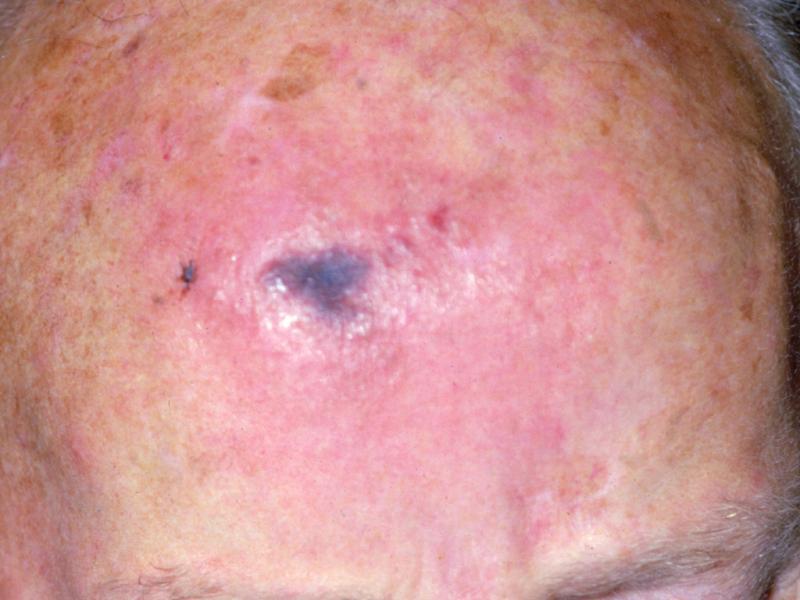Differential Diagnoses
Community-acquired methicillin-resistant Staphylococcus aureus (MRSA) infection
Caterpillar envenomation
Contact dermatitis
Ecthyma
Solar purpura
Learnings
Patients with common spider bites usually present with erythema and edema. A necrotic or dusky center within a red, inflammatory plaque is characteristic.
In bites from brown recluse spiders, vesicles and bullae can present early. Between 12 and 24 hours after envenomation, a large plaque consisting of erythema, ischemia, and necrosis (“red, white, and blue” sign) develops. Later, these lesions can progress to painful, full-thickness necrotic plaques.
Patients with bites from black widow spiders have local sweating, piloerection, redness, and mild edema. The systemic symptoms of muscle pain, cramps, abdominal pain, salivation, lacrimation, sweating, and tremors are more prominent than the skin findings. If the patient brings in the spider, seek out an arachnologist or entomologist for accurate identification.
What to Look For
Look closely for 2 small puncta, the fang marks of the spider.
Most suspected spider bites seen in the United States turn out to be the result of other causes, most commonly cellulitis or furunculosis caused by MRSA. Unless a spider bite has specifically been identified as the cause of the symptoms, be cautious about narrowing your differential diagnosis, and consider culturing for MRSA.
Acknowledgment: Image courtesy of Logical Images, Inc. (www.VisualDx.com/JUCM)

